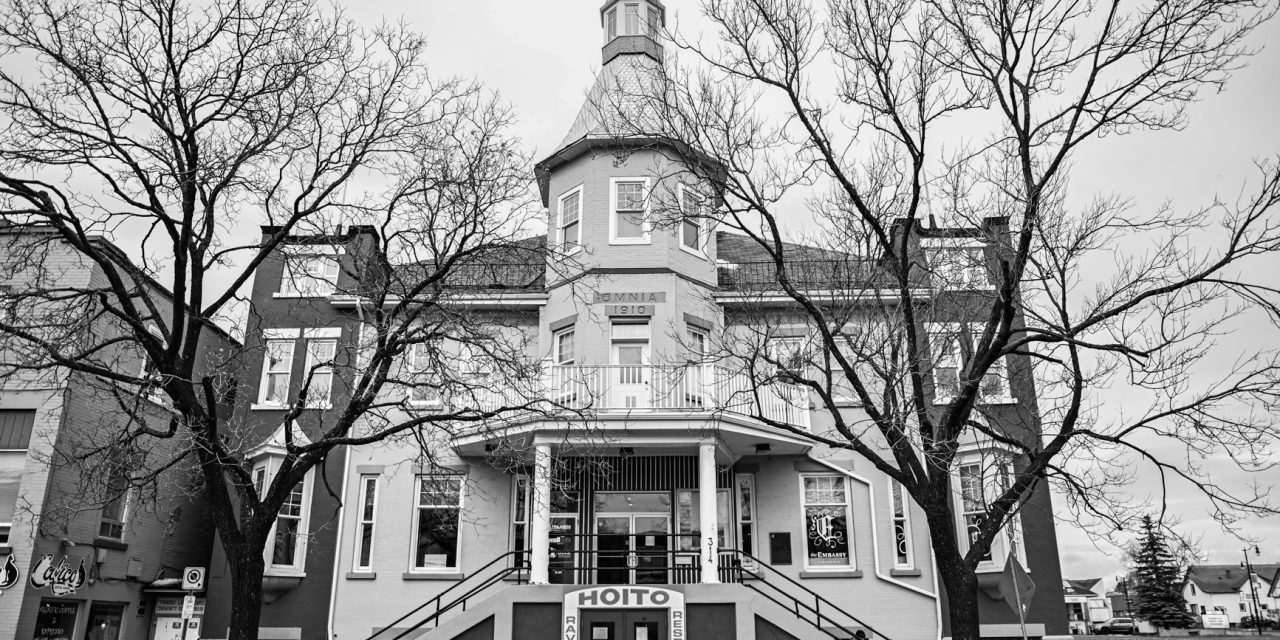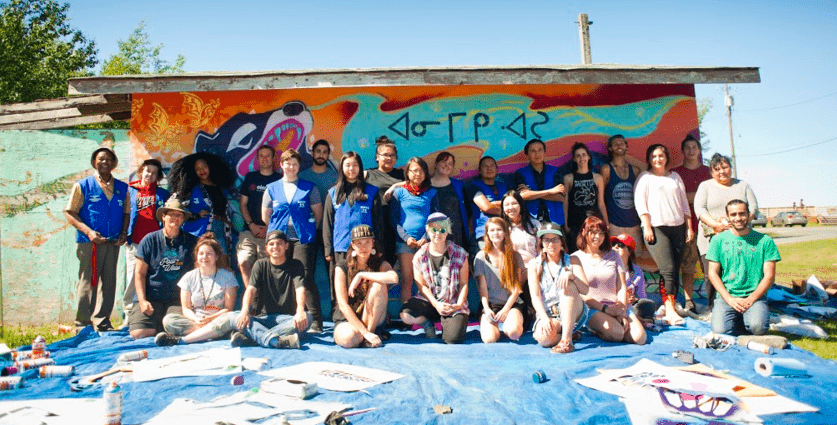Remembering the Finnish Labour Temple
Story by Saku Pinta, Photo by Darren McChristie
Looking back at it all now, it feels like I watched a close relative get sick and die. Saddled with debt incurred 10 years earlier to modernize the Finnish Labour Temple after decades of unwitting neglect, one missed loan payment by the Finlandia Association to one of the largest banks in Canada triggered a chain of events ending with the sale of the building in September.
Despite the fact that I now live 695 kilometres away in Winnipeg, as a first-generation Finnish immigrant who grew up in and around the Bay/Algoma neighbourhood, the Finnish Labour Temple is still the centre of my world. So for four months I worked long hours with an incredibly dedicated group of like-minded people—all of whom, except me, are located in Thunder Bay—in the effort to raise funds to buy this beleaguered monument to the Finnish-Canadian experience. In the end, a community partnership that our group joined fell apart at the eleventh hour. We couldn’t secure enough funding to make an offer. We ran out of time.
There wasn’t a drink strong enough on this side of the Kaministiquia to help me swallow that bitter pill. The last chance to keep the hall under some form of community ownership was lost. At this moment, the new owner is carrying out major renovations as part of the conversion of the upper levels of the building into high-scale apartments. It’s the end of an era and the loss of this cultural inheritance is a burden that weighs especially heavy on the minds of the Finnish community.
As one of the most recognizable buildings in the city, the silver cupola-topped tower of this grand red brick structure has punctuated the industrial skyline of the north side of Thunder Bay for 110 years. The Latin phrase Labor omnia vincit (labour conquers all), carved in stone across its facade high above 314 Bay Street, is a traditional motto of the trade-union movement, which serves as a permanent reminder of the building’s historic connection to workers’ struggles, above all the Industrial Workers of the World union.
“A loved child has many names” is a fitting old Finnish proverb for the Labour Temple. Most know it as the home of the Hoito Restaurant, while some older folks speak of the “Big Finn Hall,” so-called because of its diminutive and nearly forgotten neighbour, the “Little Finn Hall.” Finlandia is a more recent moniker, associated with the last major wave of Finnish immigration in the 1950s. This post-war economic boom generation didn’t identify with the struggles of their predecessors in Canada, although this new generation benefited from the higher wages, better working conditions, and improved job security the struggles of earlier immigrants helped achieve. Cultural activity would now become the overriding focus of the Finlandia, but it would remain independent of party politics, a key concession to the old guard.
For me, it was always “the Hall” in English, haali in Finglish. My childhood is filled with memories of the hall as a vibrant community space. I remember when my mother took me to the Christmas celebrations when I was a child, how the building seemed larger than life. I can recall a time when the Otava Male Choir dominated the stage with nearly 40 singers and how those big booming voices filled the auditorium. I got my first real job cleaning tables at the Hoito in my teens and continued to work there off and on until my last shift in 2006, well over a decade later. My fellow workers became the extended family that I didn’t have in Canada. They were cousins, aunts, grandmothers, even weird uncles. We didn’t always get along, but what family does? In those days, the workers ran that restaurant. The conviction that the management that manages least manages best became an obvious truth to me, further reinforced by my discovery of the radical working-class history of the hall in my late teens. I wore it as a badge of honour. I still do.
Being part of that legacy gives me meaning and purpose. I mourn the loss of that experience for the youth and future generations. They will be deprived of the hall as living history and, most importantly, as a resource—the conceptual bricks and mortar from which their own ideas of Finnishness could be constructed.
But I never give up without a fight. I’m too stubborn for that. It’s my worst quality. And my best one. As I write these lines, the Finlandia Co-operative of Thunder Bay is working to relaunch the Hoito Restaurant as a co-operatively owned enterprise. This pandemic-proof democratic ownership model served the restaurant well for the first 56 years of its existence, from 1918 to 1974 when the Finlandia Club assumed control. As a co-operative, the Hoito successfully navigated crises like the Spanish Flu, government repression, and the Great Depression. If the Hoito can be saved, perhaps it can help to preserve Finnish-Canadian culture as a living force in the social fabric of Thunder Bay.















